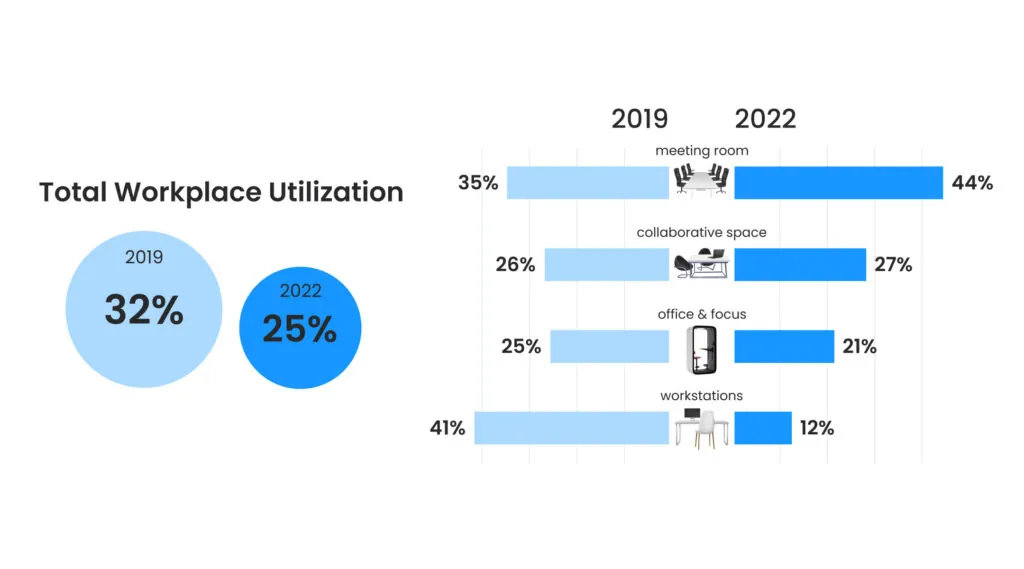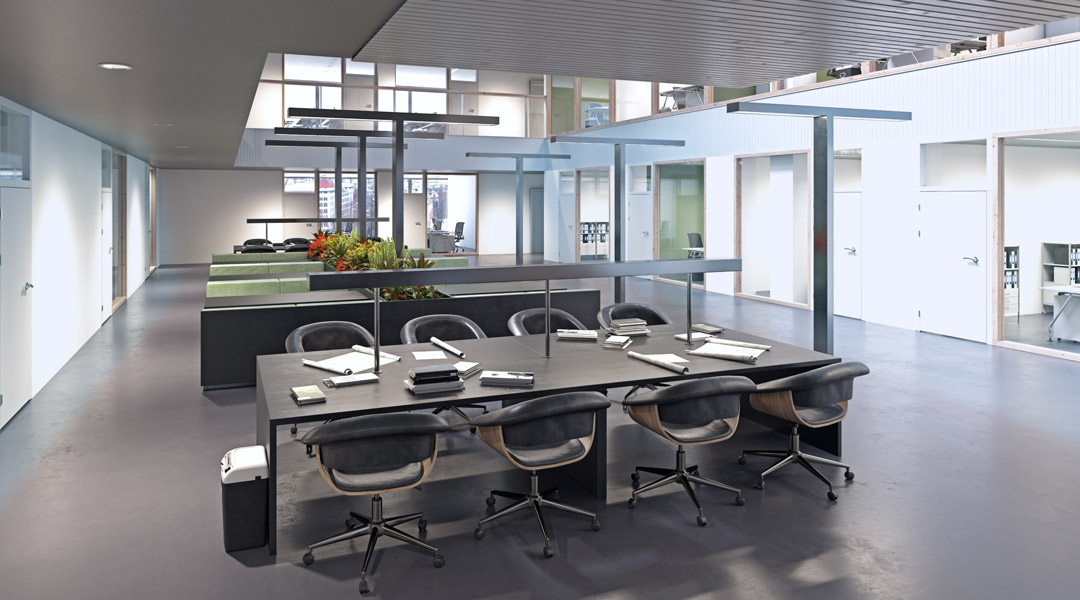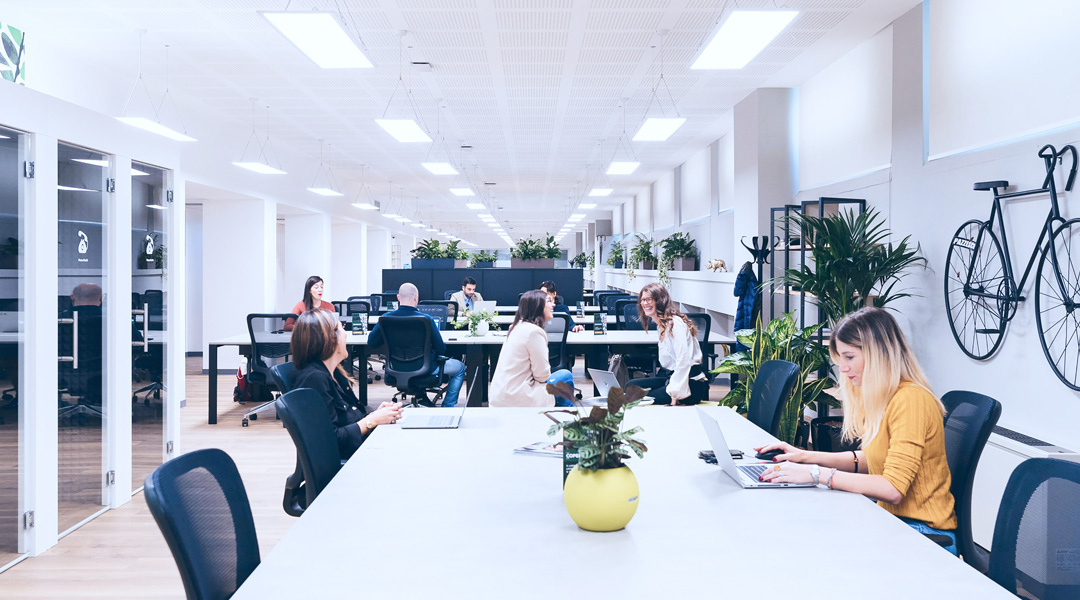
Building a Modern Business with Occupancy Sensor Data
Going to the office isn’t like what it used to be. Instead of giant labyrinths of cubicles and meeting spaces, modern workspaces need to be flexible, and designed to meet employee demands. In the digital age, workplace management is really about data management, and that’s where R-Zero occupancy sensors can mean the difference between wasted space and a thriving office environment.
Workplace Management in the Modern Era
The old style of thinking in the business world prioritized large space. The idea was that collecting all your employees under one huge, expensive roof would increase efficiency by keeping people accountable, making management easier, and fostering a collaborative dynamic. While these are still the goals of any business, the expectations of a shared workspace have changed drastically.
Space utilization sensors are at the forefront of the changing workplace culture around the world, giving businesses previously impossible insights into how exactly their space is being used and where to best direct their investments–all backed up by accurate data streaming in real-time. With discrete, accurate space utilization metrics, businesses can create reliable workplace management solutions when confronted with questions like:
- How much space does my business need?
- How can I help manage my employees’ schedule better?
- Where are my resources returning on my investment?
- Where can I redesign spaces to result in better utilization?
Answering these questions requires data, and the technology needed to capture it. Modern workplace analytics software from R-Zero is the difference between a badge or keycard system that only knows when people enter and leave the building, or a heat map of how many desks are in use at a given time. It can mean paying for a top-to-bottom office cleaning, or a targeted sanitation of the busiest spots in the office for a fraction of the cost.
Workplace management solutions are more important than ever in the modern age. As the Covid-19 pandemic has shown, unexpected challenges can suddenly and dramatically change how a business operates. Gathering restrictions and social distancing measures have shuttered thousands of businesses–many with no continuity plans or resources to adapt their work models. Workplace analytics hold the power of collating multiple data resources and generating impactful insights that can be used in real-time to help businesses adapt to global factors like those of Covid 19. In a now-famous example, businesses all over the country turned to hybrid and work-from-home models to cope with workplace restrictions–and it worked.
Forbes found that a recent survey of 260 executives reported that employees were happier and more productive when working from home, and the majority also believed that at least 25% of those employees would continue to do so after pandemic restrictions ease. Another survey by Hubstaff found that 44% of 400 companies asked expected remote work to increase profits. Simply put, a modern business is less concerned with how many people they can get to work in a space, and instead considers how the space they have can work more efficiently.
How Occupancy Sensors can help manage your workplace
R-Zero occupancy sensors for offices use Passive Infrared technology, thermal-sensing, and AI models to collect a variety of data points around your workspace. Ranging from the size of a matchbook to not much bigger than a thermostat, and using barely any power, these sensors accurately detect a person or people in a room, and report that data wirelessly without using cameras or collecting other identifying information. This means managers can keep an accurate count around the office without compromising the privacy of employees or guests.
R-Zero workplace management solutions can provide:
Single-point Occupancy Sensing
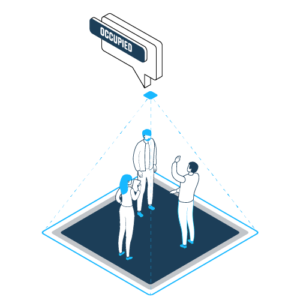
Discrete PIR sensors can be easily affixed to a desk, workspace, or cubicle, and provide a simple yes/no answer as to whether that space is currently occupied and how long it’s been occupied for. Single-occupancy monitoring like this can eliminate time wasted by employees in an agile workspace looking for a place to work. Even more, single-occupancy sensors can show how often a space is used over a given time, meaning that underutilized space can be identified and statistically verified. Among it’s other uses, managers can generate heat maps of the most-used workstations, help employees spread out more effectively for social distancing, or get a head-count of who is in the office in real-time.
Multi-person AI sensing
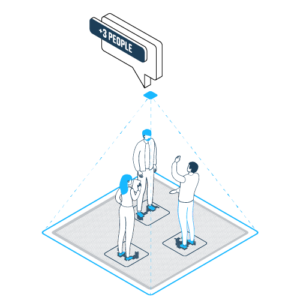
Using the same PIR software, R-Zero’s accurate overhead people-counting sensors are ideal for environments like meeting rooms or collaborative areas. By measuring thermal activity in a room, these sensors can give you a map of the active head-count, meaning you won’t just know which rooms are vacant when you need to take a meeting, but how many people are using occupied spaces. This not only cuts down on wasteful and frustrating scheduling errors, it also identifies underutilized spaces so collaboration and cost-effectiveness remain in balance.
Modern workplace solutions are about acquiring the tools to see your business in new ways, instead of wasting time, energy, and capital on wasted space in expensive markets, or underutilizing the services you already pay for. R-Zero Occupancy sensors can provide real, actionable insights about your workflow starting the second you turn them on–without signing away the privacy you and your employees deserve. In the wake of the pandemic, with more and more CEO’s looking at downsizing corporate properties and more employees preferring to remain at home for at least part of their week, companies need to be able to answer tough questions about how they use their space–and R-Zero is ready to help.
More posts you might like
-
2022 Benchmark Data. Who Is Measuring What?
Hello Friends, Who ended 2022 where you thought you would? Well, many of our customers did not and some ended the year finding themselves in the middle of surprising new trends. We’d like to share with you some of our 2022 sensor-based Utilization Benchmark Data. If you are curious about any of these key findings, […]
-
Right-Sizing your Portfolio with Peak Metrics
A new way of working is here to stay. What started as a pandemic-era necessity has rapidly become the norm in many industries, including many fortune 500 companies and global corporations. Studies have shown that 73% percent of employees say they need a better reason to go into the office than just company expectations. It’s […]
-
Top 8 Essential Office Space Utilization Metrics & Their Applications
One thing we know for sure is that the future is uncertain. Instead of being stuck in a daze of wonder, real estate professionals are grounding their planning processes in data. So long as they have data to guide them, they can plan for hybrid work environments that are bound to change over time. Fortune […]
